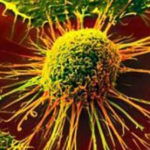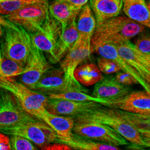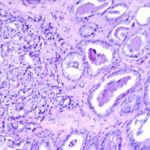2.1.1] 2.1.2] A more refined, but brief, answer to ‘what is cancer’ is, in most cases:
2.1.2] A more refined, but brief, answer to ‘what is cancer’ is, in most cases:
- a mutation driven process resulting in disorganised and uncontrolled cell division, survival and growth.
BUT if this is what happens when ‘cells behave badly’, what would we expect if ‘cells behave well’? We would expect our cells – and there are about 10 trillion of them – to operate in a ‘steady state’ in which positive and negative actions keep our cell systems in balance for our wellbeing, – a state of ‘cell homeostasis’. We would expect deleterious mutations to be spotted; the damage repaired or, the cell scrapped and the contents recycled via apoptosis (programmed cell death)
Recent research shows that cancer is highly complex, sometimes acting like a separate organ, albeit a disorganised one with the capacity to carry out subversive activities.
2.1.3] What does cancer look like?
There are about 200 different types of cancer. Many of them display characteristics that help define that particular cancer. This is of considerable use to pathologists, but it also means there is no ‘typical cancer cell’.
Uncontrolled cell division is often, but not always, a characteristic of cancer. The number of a particular type of cell, often of abnormal appearance, increases. In leukaemias for example many more abnormal blood cells are produced and crowd out the normal population.
Some cancer cells have ‘crab like’ protrusions (image 1a below), hence the derivation of ‘cancer’ from Greek word carsinos. When cells clump together, as in a solid tumour, they often display a disorganised state. An example is shown in the left hand part of image 1c (below) of prostate cells.
-

1a: Cancer cell showing ‘crab like’ protrusions
-

1b: Breast cancer cells. Note how disorganised the cells are and that they are not establishing themselves into any specific type of cell. Credit: Julia Sero, ICR 2016.
-

1c: Micrograph of prostate tissue showing cancerous cells. The section on the left shows a disorganised mass of small cells indicating the cancer is at a more advanced stage than in the section on the right. Credit: Otis Brawley, NCI.1996
2.1.4] Cancer in humans has been called an ‘evil genius’ because of the subversive activities cancer cells are able to carry out.
Amongst other traits, cancer cells can:
- Sustain cell signalling that promotes cell division and growth.
Cancer cell mutations promote self-signalling to proliferate themselves. They also limit the activity of systems that supress cell division and growth. - Evade suppression of growth
Mutations can cause circumvention of normal growth control and cell division systems. Cells can therefore divide with little restriction. - Resist cell death.
Cancer cells can disrupt cell-cycle surveillance systems. This prevents normal programmed cell death (apoptosis), and enables rogue cells to divide. - Enable cells to become potentially immortal.
There are limits to the number of times a normal cell can divide (imposed by cell senescence and telomere length). Mutations in cancer cells enable these limits to be avoided. - Initiate the formation of new blood vessels.
Cancer cells need a lot of food to fuel their active metabolism, growth and motility. Cells near the tumour surface make use of nearby blood vessels but cancer cells produce rudimentary vessels to enhance food delivery. - Enable cells to migrate and invade other tissues where they develop (called metastasis).
Some cancer cells are able to migrate from the original tumour, squeeze and slip between tissues and into blood vessels. They disperse to new sites such as lungs and liver, bone and brain that are conducive to the development of cancer cells. - Alter how cells obtain energy
Cancer cells require energy and can change from aerobic to anaerobic respiration if needed. - Avoid destruction by the body’s own immune systems
Our normal immune system destroys some cancer cells some of the time, BUT some cancer cells can mask or disable aspects of the immune system. - Make the genome unstable and increase mutations.
Cancer cells carry deleterious mutations and often have translocated (‘switched’) chromosomes, this makes the genetic material unstable and more mutations arise. - Cause inflammation that promotes cancer cell division.
A tumour, like a cut on your finger, promotes inflammation. This triggers new cells to grow to heal the cut. In cancer cells the inflammation is not ‘turned off’, and cells continue to grow.
The list above gives some indication of the complexity and wayward nature of cancer and the problems research scientists and medical people are up against.
(This is a very simplified version of ‘Hallmarks of Cancer’ by Hanahan and Weinberg)
2.1.5] Metastasis (Section 2.1.3, item 6 above and Section 7). It is an unfortunate fact that if a cancer spreads to other parts of the body (called metastasis) it becomes much more dangerous and more difficult to treat. At this late stage most cancers have also acquired resistance to cancer drugs. Most deaths due to cancer occur after the cancer has metastased. Diagnosis and treatment as early as possible is very important.
End of Level 1. READ MORE at Section 2 level 2.